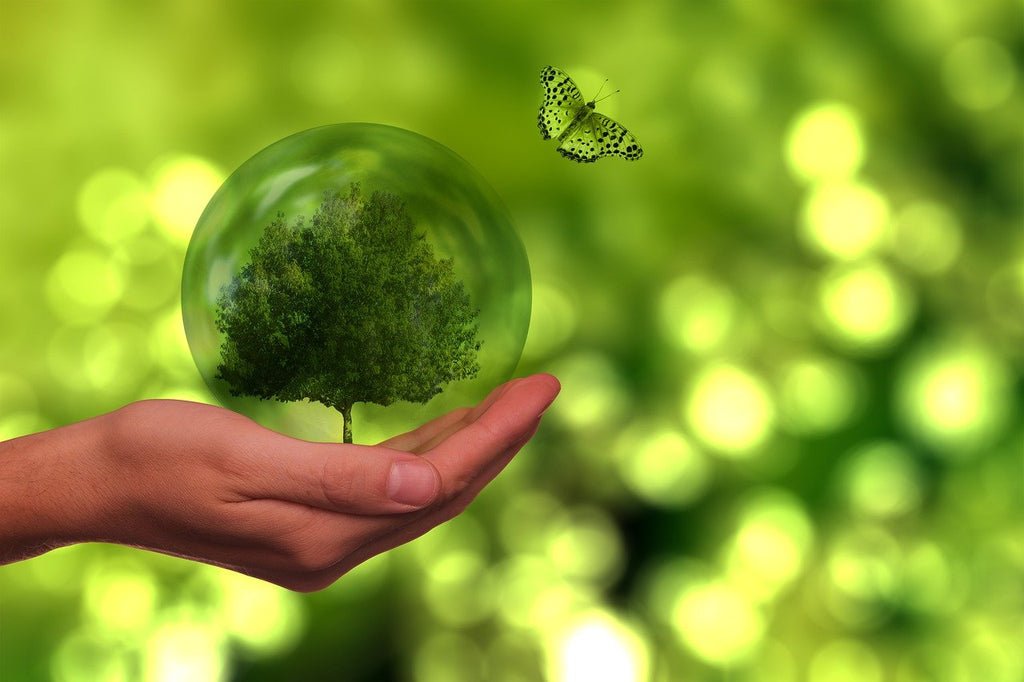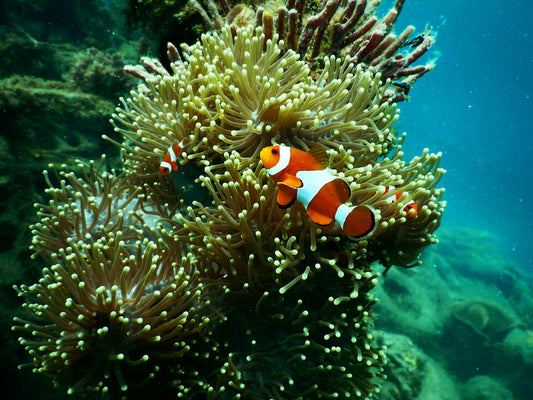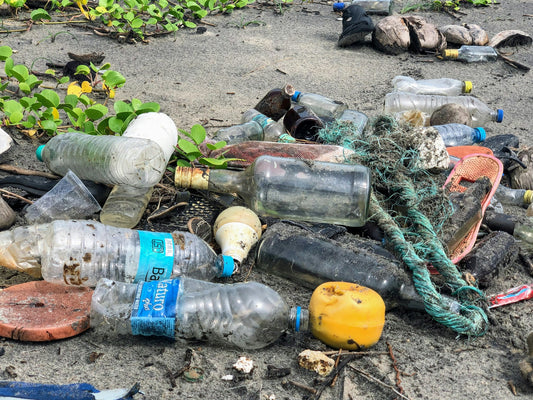Share
In the digital era, a lot of paper print like newspapers and flyers have been replaced by digital alternatives.
Neverthless, paper remains an integral part of our daily lives. That is especially true, as more and more plastic products get replaced paper alternatives.
Just think of the last time you bought a drink and got annoyed by the paper straw that replaced plastic straws a while back.
While the showdown between paper and plastic is revealing a close win for paper, its impact on the environment cannot be overlooked.
Hence, recycling paper is not just about reducing waste. It's a crucial step towards conserving resources and mitigating environmental harm.
Let's explore the journey of paper recycling, from its production to its sustainable reuse, and what you, as a consumer, can do to contribute to eco-friendly behaviors.
How is Paper Produced?
Paper production is seeing a slow and steady increase year by year.
While we produce fewer graphic paper (e.g. newspapers), the increase is seen in the production is mainly caused by packaging paper and board.
Paper production begins with the harvesting of trees, mostly spruce, pine, or birch trees.
The harvested wood is then chipped and the chips are boiled with water and additives like sodium hydrogen sulfide and sulfur dioxide.
The result is a cellulose mixture that is pressed thinly and dried to form paper sheets.
How is Paper Recycled?

The Paper Recycling process is really similar to the initial paper production. The only difference is that before the old paper can be shredded and mixed with water, it needs to be collected and sorted.
And this makes for the most complicated step of the process.
Consumers can recycle various paper products, including newspapers, cardboard, magazines, office paper, and packaging materials.
All these paper and cardboard scraps are collected from homes and then separated into different grades and qualities. The scraps are then sorted and cleaned to remove contaminants like plastic labels or glue.
The resulting clean paper scraps are then boiled to create pulp. This mixture is screened for contaminants again, before it gets pressed into recycled paper.
As with all recycled materials, the main problem when it comes to paper recycling is contamination. When recyclable and non-recyclable materials are mixed, this increases te effort and cost to clean and sort the waste.
As consumers, we can help facilitate that sorting process, by educating ouselves about recycling practices.
What Do I Need to Know as a Consumer?

As a consumer, understanding what paper can and cannot be recycled is crucial.
Most clean and dry paper products can be recycled, including newspapers, magazines, cardboard, office paper, and paper packaging.
However, certain types of paper, such as paper contaminated with food or grease, wax-coated paper, and heavily dyed paper, may not be suitable for recycling and should be disposed of properly.
The following are examples of paper that cannot be recycled and should be disposed of in the regular trash or composted.
- Napkins, tissues, and paper towels: most of those can be composted, if they're only contaminated with food residue. If they are dirty from chemicals or cleaner, dispose of them in the regular trash.
- Wax paper: wax paper is often lined with petroleum based wax for its water and heat resistency. it cannot be recycled or composted and belongs in the regular trash.
- Paper receipts: most paper receipts are printed on thermal paper that contains chemicals. Thus, paper receipts belong in the regular trash.
- Plastic-coated paper: many paper items are coated in plastic and you may not even know it. The most frequent examples are coffee cups, wrapping paper, and milk or juice cartons.
- Pizza boxes: even though most cardboard can be recycled, pizza boxes often con't. They are often covered in grease and soiled boxes are better composted. If the pizza box is only slightly greased, you can recycle it.
As a rule of thumb... everything that is a mixture of paper and something else, or is contaminated with something else, does not belong in the recycling bin. Other examples of this include wallpaper, wet wipes or post it notes.
That brings us to paper that can be recycled.
Most paper that does not fall under the above categories can be recycled, as long as it is clean.
That includes brown paper, computer paper, shredded paper, envelopes, magazines, catalogues, and newspapers.
Please remove any non-paper contaminants, such as plastic windows in envelopes, before recycling.
If you're unsure about any paper product, just hit a recycling search on one of the many directories available and check your local recycling system.
How Sustainable is Paper?

The debate over the sustainability of paper is nuanced. When comparing paper and plastic, paper gets a small edge, because of its better recycling rates and biodegradability.
Comparing environmental footprints, paper uses renewable resources but has a higher carbon footprint. While plastics boast lower emissions, they pose chemical risks and take centuries to break down.
Whenever you have the option between a virgin material and the recycled material, recycled products always conserve energy, reduce water consumption, and minimize the need for landfill space.
Furthermore, with a groing need for paper products, there is an increased focus on sustainable forestry practices and certifications, such as the Forest Stewardship Council (FSC).
These ensure that paper production is environmentally responsible and socially beneficial.
Conclusion
Paper recycling is a vital component of sustainable waste management and resource conservation.
By recycling paper, we minimize the demand for virgin resources, reduce energy and water consumption, and reduce pressure on forests.
As consumers, our choices play an important role in recycling paper products and promoting a circular economy.
Nonetheless, we should not forget that recycling is only one of the many "R's" that are important for a sustainable circular economy. It all needs to start with conscious consumption and reusing what we already have.
We hope you enjoyed this article. Please feel free to leave a comment below if you want to engage in the discussion.
If you want to read more like this, make sure to check out our Blog and follow us on Instagram. If you are interested in truly sustainable products, check out our Shop.








